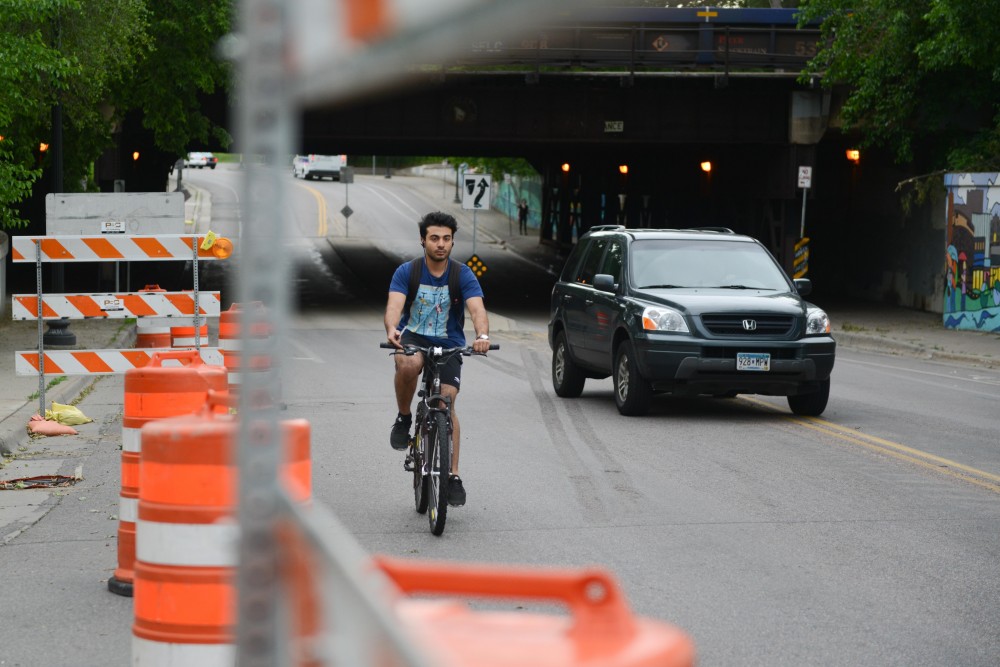A new smartphone app made at the University of Minnesota aims to decrease construction zone crashes.
The app, Workzone Alert, delivers in-vehicle alerts to drivers in construction work zones through Bluetooth. It was created as part of senior system engineer Chen-Fu Liao’s research to help improve the safety of construction work zones.
The app was developed by Liao and researchers from the University’s Center for Transportation Studies and the University’s HumanFIRST Laboratory. It was sponsored by the Minnesota Department of Transportation.
Liao, the principal investigator on the project, said the push for the app came from the need to increase drivers’ safety around work zones.
In 2013, there were 67,500 crashes in work zones, according to the U.S. Federal Highway Administration.
“The idea is to provide a more dynamic information that reflects to what is going on in the work zone,” Liao said.
The app works by placing Bluetooth low-energy tags at construction work zones with pre-programmed messages. When the driver enters a work zone, their phone receives an audio-visual alert warning them of the upcoming road conditions and prompting them on what action to take, Liao said.
The HumanFIRST Laboratory assessed the app’s capabilities and designed some functions.
The lab wanted to find out how the apps would be used, and determined the best types of messages to send to drivers, said Nichole Morris, principal researcher at the lab.
“What we’re doing in our project is we’re looking at the human side of how the technology would work,” she said. “‘Will this system actually result in the safety benefit we’re hoping for?’”
Morris said they originally debated what types of messages to send to drivers: audio, visual or audio-visual.
Combining research and driver surveys, the lab determined audio-visual would be the most effective option.
Morris said an alert could look like “Slow traffic ahead, quarter mile, reduce speed.” She said the alert is short and leads with context.
Construction zone crashes typically happen when drivers aren’t paying attention, there are poor road conditions or if there’s a traffic-control change — like a lane closure — said Kevin Gutknect, communications director for the Minnesota Department of Transportation.
“If everyone was paying attention and well aware, there would be a lot fewer crashes,” Gutknect said.
Initially, Liao said using phones to deliver the messages was debated. But the team decided that phones were the best way to show the technologies’ feasibility.
The technology could have applications outside of construction, according to Liao. Bikers on campus could place a Bluetooth tag on their bike and alert drivers when they are nearby.
Liao said the next phase of the project includes recruiting drivers to pilot the app.














